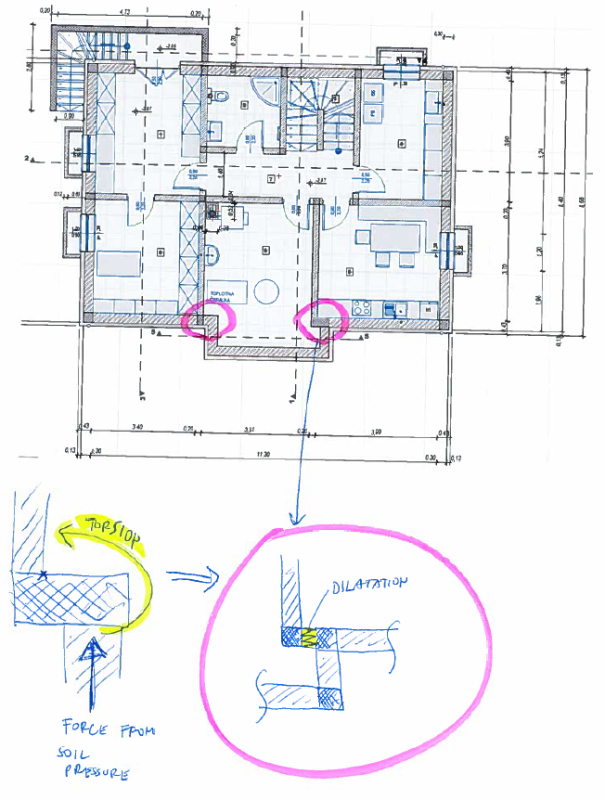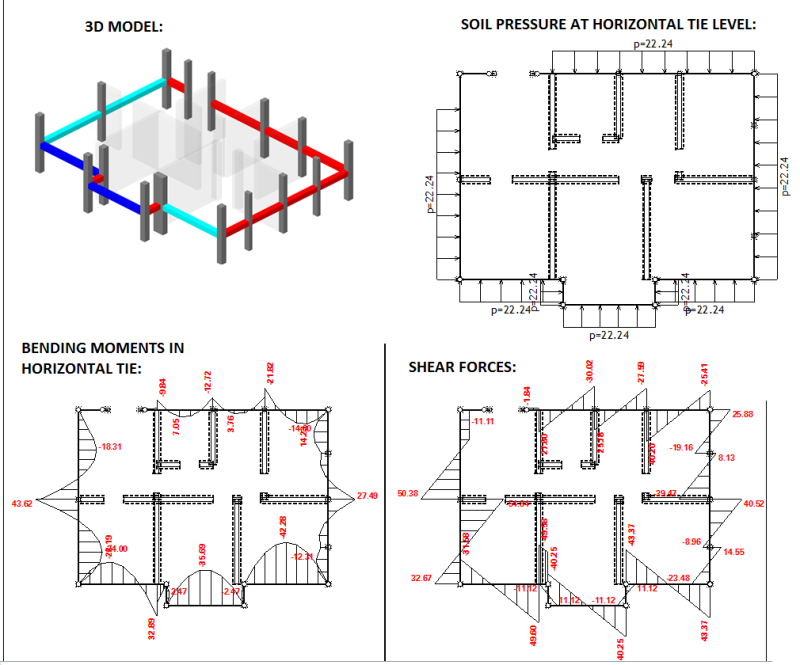n3jc
Civil/Environmental
- Nov 7, 2016
- 189
Hi, not long ago i was asking about modeling concrete horizontal/vertical ties for masonry basement.
I modeled it as pinned top/bottom for vertical ties and pinned in corners for horizontal tie.
Now im dealing with actual basement.
Because of geometry of the walls I have problem with marked vertical tie.
The problem is eccentric loading + supporting wall at the edge of the tie- there will be torsion in vertical tie because of it + biaxial bending...
I think it would be better to make dilatation and two vertical ties instead of one.
What do you think? Vertical tie dimensions are 59/30 cm...


I modeled it as pinned top/bottom for vertical ties and pinned in corners for horizontal tie.
Now im dealing with actual basement.
Because of geometry of the walls I have problem with marked vertical tie.
The problem is eccentric loading + supporting wall at the edge of the tie- there will be torsion in vertical tie because of it + biaxial bending...
I think it would be better to make dilatation and two vertical ties instead of one.
What do you think? Vertical tie dimensions are 59/30 cm...



